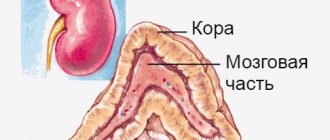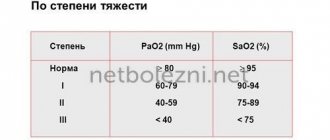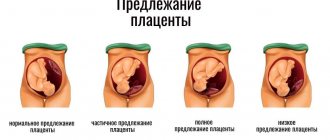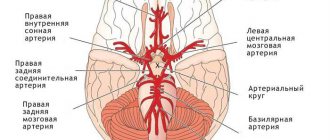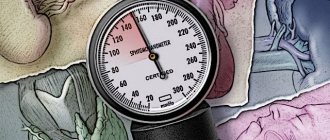Adrenal diseases
are considered severe endocrine pathologies, because lead to serious disruptions in the functioning of many organs and systems of the human body.
The adrenal glands are small paired organs located above the upper poles of the kidneys. The main task of the adrenal glands is the production of hormones that carry out vital processes in the body (glucocorticoids, mineralcorticoids, estrogens, adrenaline and norepinephrine, etc.)
Main causes of adrenal diseases
are usually associated with excessive production or deficiency of hormones of the adrenal glands themselves or pituitary hormones (ACTH).
About adrenal function
The adrenal glands are two endocrine glands located on top of the kidneys. Although the size of these glands is very small and their total weight is up to 12 grams, they perform very important functions in the body. The functioning of the entire body depends on the proper functioning of the adrenal glands.
What are the adrenal glands for?
The adrenal glands are made up of an outer layer (cortex) and an inner layer (medulla). The cortex occupies about 90% of the volume of the entire gland, and only 10% is the medulla. The hormones produced by the cortex and medulla are completely different.
The cortex synthesizes:
- hormones responsible for water-salt metabolism
- hormones responsible for carbohydrate metabolism
- sex hormones.
The medulla produces:
- adrenalin
- norepinephrine
- peptides.
Each of the functions of the adrenal glands is critically important for the human body, and a failure in the synthesis of any hormone can lead to death or disability.
How are adrenal tumors treated at the Treatment and Rehabilitation Center?
A serious problem when removing an adrenal tumor is the body’s unpredictable reaction to changes in hormonal levels. Directly during the operation, a patient with pheochromacytoma (tumor of the brain) may develop severe circulatory disorders. Therefore, it is so important that the intervention is performed by surgeons and anesthesiologists with extensive experience in managing such patients.
During the operation, as a rule, the entire adrenal gland is removed along with the tumor located there - this provides confidence in a complete cure. The function of producing hormones is taken over by the paired organ. Sometimes he cannot cope with the load - and then the endocrinologist in the postoperative period prescribes hormonal therapy to the patient, which allows him to avoid problems with well-being.
| Specialists of the Treatment and Rehabilitation Center of the Ministry of Health of Russia have accumulated unique experience in performing laparoscopic (through 1-3 punctures) operations to remove benign and malignant adrenal tumors up to 10 cm in diameter. Such an intervention does not leave noticeable scars and is much easier for the patient to tolerate than traditional “open” surgery. It is no coincidence that patients not only from Moscow and the Moscow region, but also from many other regions of our country turn to the LRC for help, because gentle treatment is insurance against postoperative complications and allows patients to return to normal life as soon as possible after surgery! |
Adrenal diseases
Diseases of the adrenal glands are usually divided into two subgroups, depending on the structure of this organ:
- bark diseases
- diseases of the brain.
Main groups of diseases
- diseases with excessive synthesis of hormones (hyperfunction), in particular, Itsenko-Cushing syndrome, corticoestroma, androsteroma, etc.;
- diseases with insufficient synthesis of hormones (hypofunction): chronic and acute adrenal insufficiency;
- adrenal dysfunction (decreased production of some hormones and excessive synthesis of other hormones): various forms of congenital dysfunction of the adrenal cortex.
Diseases and their descriptions
- “Nelson syndrome” (adrenal insufficiency, which occurs after surgery - excision in the “Itsenko-Cushing” pathology).
Accompanied by:
- frequent occurrence of headaches;
- decreased visual function (dulling of acuity);
- decrease in taste sensations (receptors);
- hyperpigmentation.
Treatment is the optimal selection of medications that affect the hypothalamic-pituitary system. If there is no result from such therapy, surgery is performed.
- “Itsenko-Cushing syndrome” (increased synthesis of cortisol).
Characteristic accompaniments:
- uneven obesity in different areas;
- the face becomes like the moon (red color, cyanotic tint);
- muscles atrophy, tone and strength decrease;
- in the area of the thighs, buttocks, and abdomen, the amount of muscle mass decreases;
- the skin is marble-colored, spider veins and patterns become noticeable, it peels off, is dry, and a severe rash appears;
- osteoporosis often develops (pain, deformation and thinning of joints and bones);
- other symptoms (the central nervous system, the cardiovascular system suffers, and diabetes mellitus often occurs).
Patients experience inhibition of movements and thinking, depression predominates, and panic occurs in the form of an attack.
- “Addison’s disease” (chronic insufficiency, with the development of bilateral damage, complete or partial cessation of hormone synthesis occurs).
List of symptoms:
- pain syndromes (severe) occur in the muscles, joints, and intestines;
- the heart begins to function abnormally;
- metamorphoses (diffuse) occur on the mucous membranes and dermis;
- the temperature drops, resulting in a severe febrile state.
The main cause is autoimmune disorders.
- Benign and malignant neoplasms (tumors).
They can arise from both adrenal structures (medullary, cortical).
Signs appear:
- muscle tremor (shaking);
- increased blood pressure;
- development of tachycardia;
- high excitability;
- chest and abdominal pain;
- excessive urination;
- a heightened sense of approaching death.
Treatment is carried out only by surgery.
- Hormonal tumor formation (pheochromocytoma).
Arises from certain cells (chromaffin) because catecholamine is produced abnormally.
Accompanied by:
- increased blood pressure;
- severe hyperhidrosis (sweating);
- constant dizziness;
- pain syndromes;
- difficulty breathing.
Constipation or diarrhea, vomiting and nausea often occur.
- Inflammation.
Accompany other pathological conditions that manifest themselves with various symptoms (slight fatigue, mental disorders, cardiac abnormalities).
Symptoms
Symptoms of adrenal gland diseases appear gradually.
You may notice in yourself
- increased fatigue,
- muscle weakness,
- weight loss,
- nausea,
- low blood pressure.
Signs of dysfunction of the adrenal glands can also be: sleep disturbance, sexual weakness in men, changes in the cycle in women, tinnitus, osteoporosis, etc.
One of the signs of insufficient production of hormones by the adrenal glands is darkening in some areas of the skin (folds on the arms, elbows, around the nipples, etc.).
Estroma
A tumor of the adrenal cortex that produces large quantities of female sex hormones - estrogens. Typically these tumors are malignant.
Symptoms:
Estroms are very rare; clinically they manifest themselves in males as impotence, bilateral gynecomastia, feminization of the physique, and sometimes testicular hypotrophy. In most patients, along with feminization, there are signs of hypersecretion of gluco- and mineralocorticoids.
Diagnostics:
It consists of studying specific hormones in the blood, performing a CT or MRI of the abdominal organs.
Treatment:
Removal of an adrenal tumor.
Diagnosis and treatment of adrenal diseases
Diagnostics
1. To make an accurate diagnosis, the doctor will definitely prescribe a blood test for hormone levels.
2. To clarify the structure of the adrenal glands, their size and possible deviations, you should also undergo an ultrasound scan of the adrenal glands.
3. If there is a lack of information, tomography or radiography is prescribed.
You can undergo all these laboratory and instrumental tests in our clinic in St. Petersburg.
Treatment
Treatment of adrenal diseases is prescribed after a thorough and comprehensive examination and an accurate diagnosis.
For diseases characterized by insufficient production of hormones, the main method of treatment is taking hormonal medications .
In diseases accompanied by excessive production of hormones, it is sometimes impossible to find out the cause.
In some cases, the cause of excess hormones is neoplasms, which are almost always benign and often develop into a cyst. Treatment of tumors is carried out using gamma irradiation, but only after determining the exact location using MRI. In some cases, treatment includes surgery .
Diseases characterized by excess production of adrenaline are often caused by a tumor in the adrenal medulla and are treated by removing the tumor .
Diagnostics
Visualization of education
It is very important to know the characteristics of a formation that will help you understand whether it is benign or not. In 2-5% of cases, the finding turns out to be cancer, and most adrenal tumors, fortunately, are benign (about 95-97%). When performing an ultrasound, CT or MRI, special attention should be paid to indicators such as size, shape, structure and growth in the dynamics of the formation.
Conditional criteria for adrenocortical cancer:
- size more than 4 cm in diameter;
- the shape of malignant formations in most cases is irregular, with unclear, uneven edges;
- the structure of malignant formations is heterogeneous, of varying density;
- The growth in the dynamics of malignant tumors is quite rapid: more than 2 cm per year.
Conditional criteria for metastasis to the adrenal gland:
- size less than 3 cm in diameter;
- the shape of the site of stasis in most cases is round with fuzzy, uneven edges;
- the structure of the metastasis is heterogeneous, of varying density;
- the growth in the dynamics of metastasis does not differ according to the pattern.
Hormonal examination
All patients with an adrenal tumor should undergo hormonal testing. 4 tests are important.
Test No. 1
Determination of aldosterone-renin ratio (ARR).
Methodology: ARS is performed in the morning, after the patient has been in an upright position for no more than 2 hours (until 10 am). Before blood is drawn, the patient must sit (lie down) for 5–15 minutes. According to the recommendations of the International Endocrinological Society, the diagnostic criterion for primary hyperaldosteronism is an APC value ≥ 30.
Test No. 2
Overnight dexamethasone test.
Procedure: at 11 p.m. the patient takes 1 mg of Dexamethasone, at 8 a.m. the next day, cortisol in the blood is determined. Normally, cortisol drops below 1.8 mcg/dL (50 nmol/L).
Test No. 3
Determination of free fractions of metanephrine and normetanephrine in daily urine, as well as in blood plasma.
Methodology: before blood sampling, the patient must be in a horizontal position for 30 minutes, then the blood sampling itself is also carried out in a lying position. If the permissible upper limits of metanephrine values are exceeded by more than 3 times, a confirmatory test is not required. If the level of metanephrines increases by less than 3 times, additional scintigraphy is required.
Test No. 4
Determination of levels of steroid hormones (androgens and estrogens).
Biopsy of the formation
If a patient is suspected of having adrenal cancer, then a biopsy of the formation is not recommended - this rather difficult manipulation has not proven to be very effective in terms of differential diagnosis between a malignant and benign adrenal formation. But if doctors suspect metastatic lesions, then a biopsy is justified and recommended.
Prevention of adrenal diseases
- The main cause of most adrenal gland diseases is stress and nervous exhaustion . Based on this, the best prevention is to reduce the number of stressful situations by normalizing the situation in the family and in the work team.
- Excessive use of antibiotics also leads to disruption of the gland.
- Adrenal gland diseases often occur as a consequence of other diseases of the body.
Pay attention to your health, promptly contact an endocrinologist if any symptoms appear, and this will allow you to maintain health for many years.
Reasons for the development of pathology
The exact causes of adrenal adenoma are unknown to medicine. There are factors that provoke the development of pathology. These include:
- heredity (rare);
- smoking, alcoholism;
- obesity;
- frequent stressful situations;
- age over 50 years;
- exposure to physical and chemical carcinogenic factors;
- parasitism in the body of certain types of oncogenic viruses (papillomavirus, Epstein-Barr virus);
- hyperplasia of the adrenal cortex;
- endocrine tumors of other glands (parathyroid, pancreas, pituitary gland).
Androsteroma
A hormonally active tumor of the adrenal gland that produces large quantities of male sex hormones.
Symptoms:
In women - menstrual cycle disorder, clitoral hypertrophy, facial and body hair growth, masculinization of the figure, deepening of the voice, and sometimes male pattern baldness. Some patients may experience hypertension and carbohydrate metabolism disorders in the form of hyperglycemia and a moderate increase in sugar in the urine. In men, androsteroma is extremely rare and does not show any external signs, so the diagnosis is made in a late stage of the disease.
Diagnostics:
It consists of performing a CT scan of the abdominal organs or MRI of the abdominal organs, the content of a high titer of androgens and their metabolites in daily urine.
Treatment:
Removal of an adrenal tumor.
